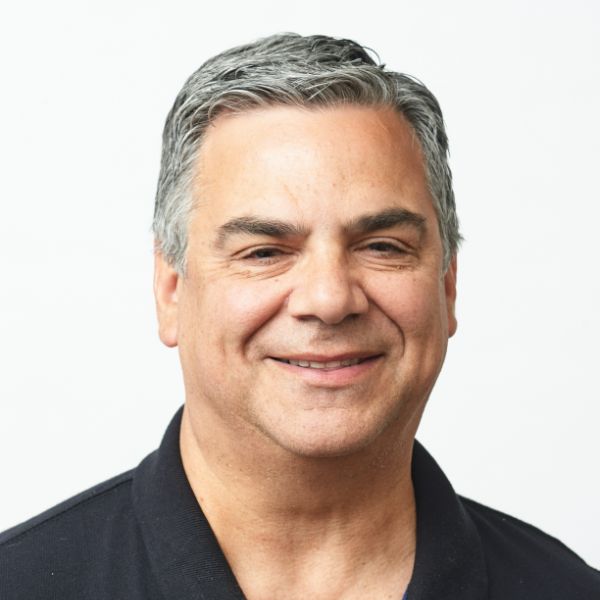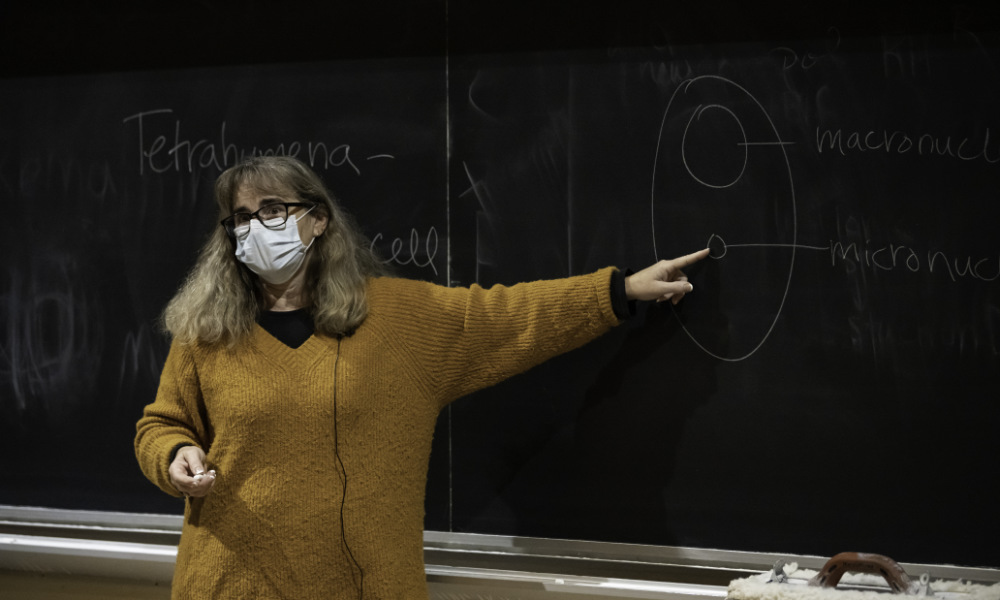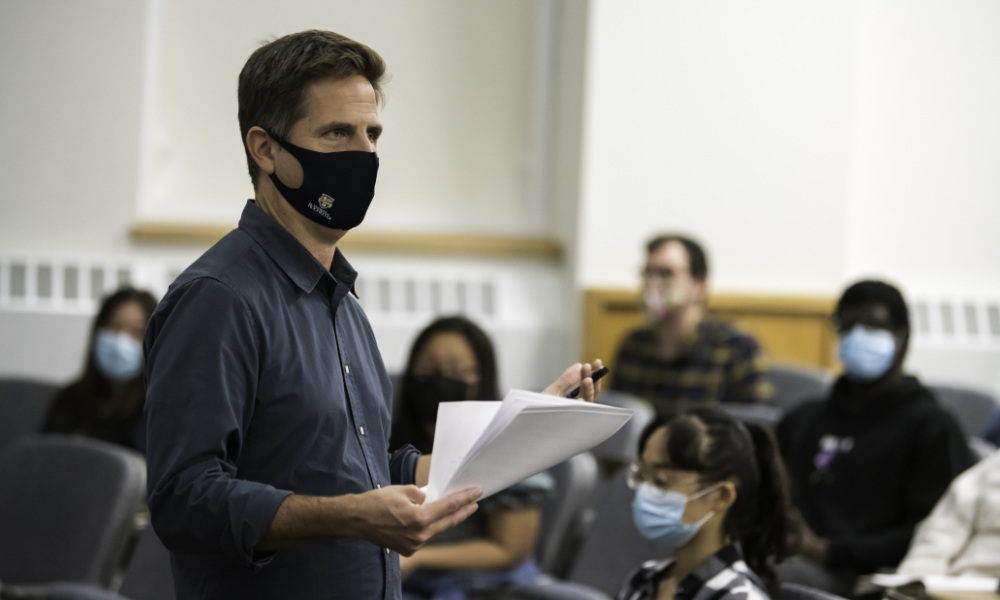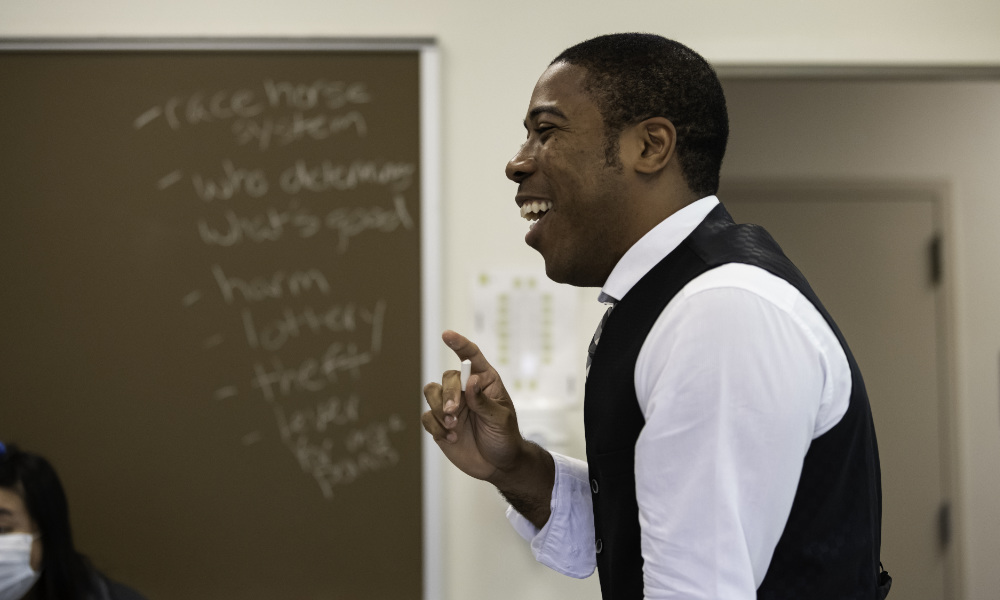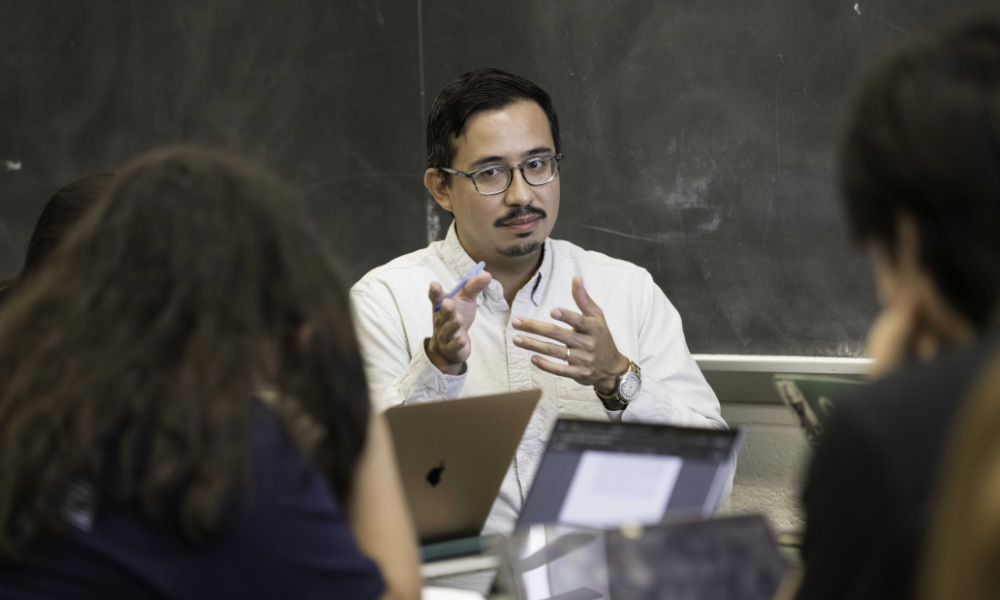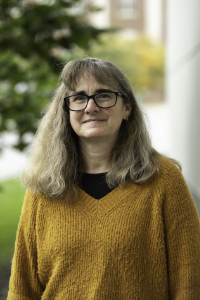
What they’re saying
“Within weeks of my Principles of Genetics course in 2018, Dr. Sia’s passions for genetics and teaching were evident. She taught difficult subjects with clarity, confidence, and excitement. She always took the time to answer any of my questions and always had her office door open. To this day I credit this class for solidifying my interest in genetics and introducing me to Dr. Sia, a much-needed strong female role model for me in the field of genetics. Months later, I declared myself as a molecular genetics major and gained Dr. Sia as an advisor. She not only helped map out the rest of my college courses, but also encouraged me to act on my passion for genetics through research and motivated me to become a teaching assistant for three different biology courses.”
—Mairead Bresnahan ’21
“Time and again I ask students why they choose to declare the molecular genetics major, the BS track that Elaine advises. The answers have been invariably, ‘Dr. Sia got me interested in genetics and she is very helpful—she is always available.’ I see these effective teaching/mentoring results when these majors later take the upper-level courses that I teach.
—Cheeptip Benyajati, associate professor of biology and codirector, with Sia, of the Undergraduate Program in Biology and Medicine
“Dr. Sia has had a profound impact on me and countless other students through her passion for genetics, teaching, and her inspirational dedication to inclusion and equity inside and outside of the classroom. I can confidently say that I would not be the driven scientist, academic, or person I am today without Dr. Sia. She is the perfect person to receive the Goergen Award for Excellence in Undergraduate Teaching.”
—Jacob Squicciarini ’19
The biology professor has taught nearly 4,000 undergraduates since joining the University in 2000.
Elaine Sia’s first experience teaching came as a graduate student at the Columbia University Medical Center.
“I began to get a sense for the diverse strategies students used to learn material,” she says. “It became clear that simply taking good notes and memorizing them is not enough to achieve proficiency in the sciences.”
From those experiences working in small groups and one-on-one with students, Sia developed a teaching philosophy that still guides her today as a professor in the Department of Biology at the University of Rochester. “Good teaching is about building relationships,” she says. “Students must be encouraged, supported, and provided with the tools to be active participants in the learning process.”
Sia, who is also codirector of the Undergraduate Program in Biology and Medicine, stresses that knowing the answer isn’t enough. “I try to help them understand that ‘how’ we know is just as important as ‘what’ we know. I want them to ask by the end of the course: ‘How do we know this? What experiments support this?’”
Sia has taught nearly 4,000 undergraduates since coming to the University in 2000. One of her milestone achievements came as chair of the biology curriculum committee, when she helped create a system where the biology department had the capacity, support, and staff to add laboratory sections to introductory courses. “Our students needed more time at the bench,” she says. “They need strength in the theory and strength in the practice, so by the time they go into research labs, they have some of the basic lab skills.”
Michael Welte, chair of the biology department, says Sia is “able to square the circle that teachers are all striving for: maintaining academic rigor while being kind, approachable, and understanding.”
Sia has taught a variety of courses at Rochester, but perhaps the most important is the 100-level Genetics, the only course required of all biology majors, and the first demanding course in that major.
“Before Elaine’s arrival, no faculty seemed able to teach this large course in a manner that students could appreciate,” says Thomas Eickbush, former chair of the biology department. “Elaine designed a comprehensive course that brought in exciting new topics in molecular genetics while retaining the relevant classic topics in genetics.”
Last year, in the midst of a pandemic and with the biology department shorthanded because of a retirement, Sia offered to teach courses in molecular biology (a class she last taught 15 years ago) and cell biology. She developed her courses using a flipped classroom model, creating prerecorded lectures but appearing live in the classroom for discussions with students. That approach helped students feel a sense of normalcy in the most abnormal of years.
The Michigan native says engaging in dialogue with students has always been a crucial component of her teaching. “I have to feel I’m talking with the students and not at them,” she says. “It’s harder to achieve with a really large class.”
But she finds a way, waiting patiently when her class of upwards of 200 students is reticent to engage in dialogue. “I’ve learned to be comfortable with uncomfortable silence,” she says. “Because then, they’ll answer. They don’t like it either.”
While her role as a professor requires her to evaluate and assign grades to students’ work, she nonetheless views students as partners. “I tell them, ‘We’re all on the same team, working toward the same goal.’ After all, these are the scientists of the future.”

